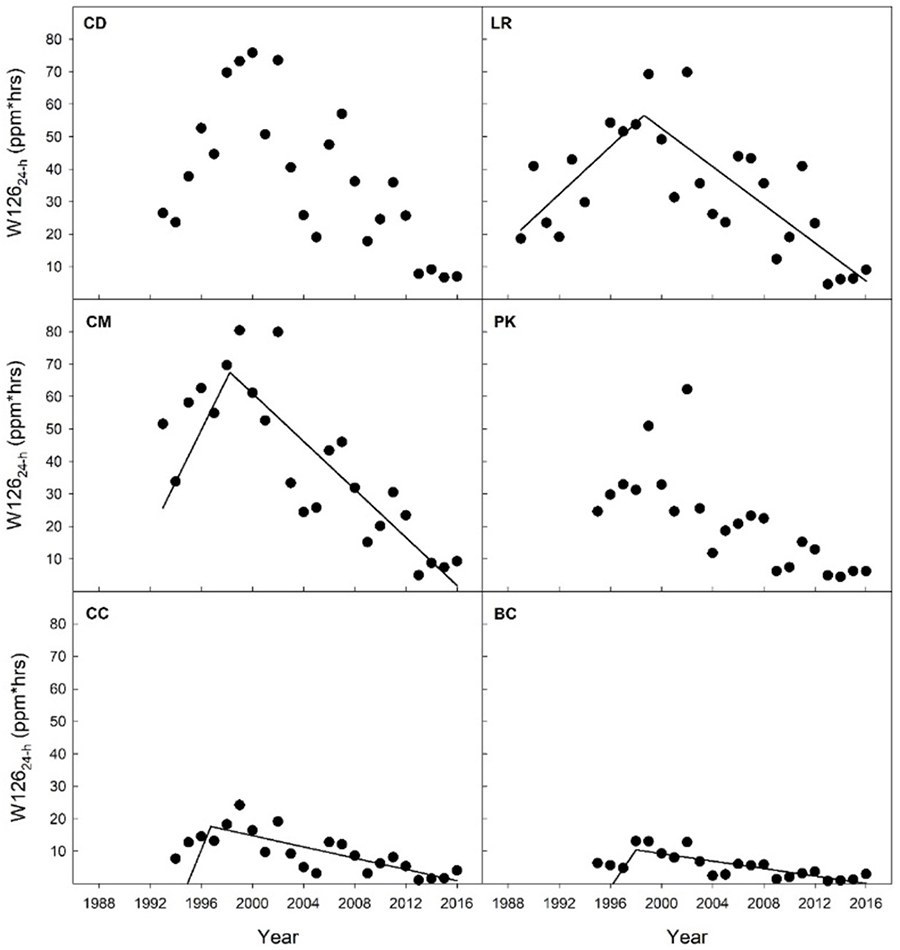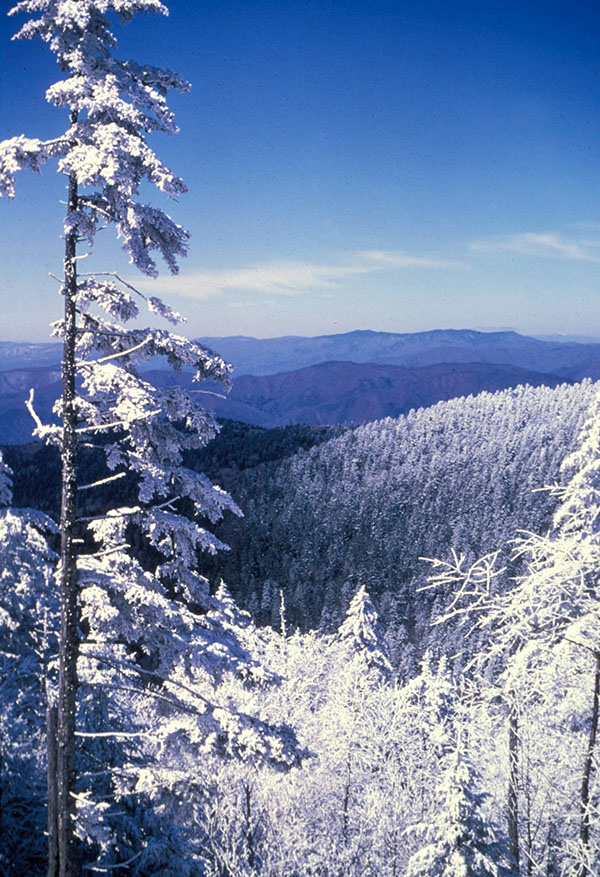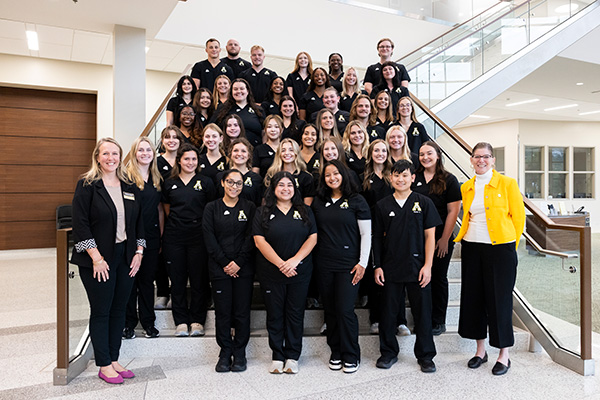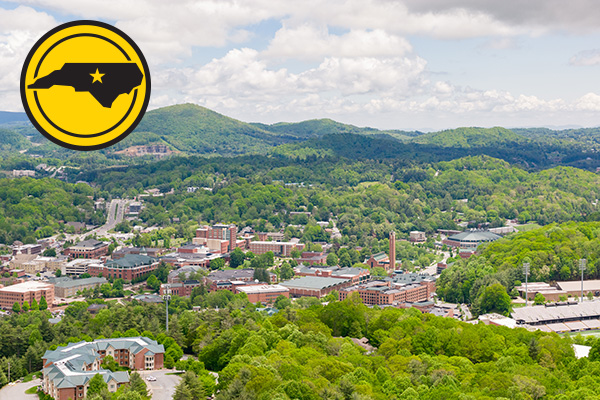BOONE, N.C. — New research led by Appalachian State University professor Dr. Howard Neufeld, as reported in the journal Atmospheric Environment: X, reveals smog (ozone) has dropped over the past several years to its lowest levels in Great Smoky Mountains National Park since measurements began in the mid-1980s.
This outcome is important news for researchers, as well as policymakers and regulators, who have worked together to reduce smog in the most visited national park in the country, said Neufeld, a plant ecologist in Appalachian’s Department of Biology.
“The results of this study show how successful the Clean Air Act has been in improving air quality within this popular national park,” he said. “Improving air quality means that both plants and people are at a lower risk to ozone exposures than in previous decades.”
Neufeld’s collaborators in the study include one of his former graduate students, Alyssa Sullins ’14; Dr. Allen S. Lefohn, an independent environmental consultant and international authority on ozone; and Dr. Barkley Sive, chemist in the Air Resources Division of the National Park Service (NPS). Before joining the NPS, Sive was a professor at Appalachian.
For years, the park has suffered from deteriorating air quality due to its proximity to major urban areas and numerous coal-fired power plants. “The unique location of the park allowed us to document changes in ozone concentrations associated with transport from various regional air pollution sources,” Neufeld said. “Our study indicates that the park is in an excellent location to monitor changes in trend and exposure patterns as a function of future regional emissions.”

These graphs show the trends in the W126 ozone exposure index over the past several decades for Great Smoky Mountains National Park. This index emphasizes the higher concentrations of ozone, and the higher the index value, the more damaging the ozone exposure can be to plants. Each graph represents one of the six monitoring sites in and around the park. All sites show a sharp rise from the l980s to the late 1990s and then a steep decrease after 2002, indicating large air quality improvements in recent years. The four upper graphs are high-elevations sites, and the lower two graphs are low-elevations sites. Low-elevation sites generally have lower ozone exposure values than high-elevation sites. Image courtesy of Howard Neufeld
The paper, published March 9, shows that after rising rapidly from the mid-1980s to the late 1990s, ozone levels in the park began a dramatic decrease after 2002 that has continued to the present.
As of 2016, the last year analyzed in the paper, ozone exposures over the past several years were at their lowest levels since measurements began in the park over two decades ago. Decreases in ozone result primarily from reduction of hourly averaged O3 (ozone) concentrations greater than or equal to 60 ppb (parts per billion). The study documents the dramatic reversal in ozone trends within the park.
The study also revealed large differences in the pattern and amount of exposure to ozone within the confines of this relatively small but topographically diverse park that straddles the Tennessee/North Carolina border. Ozone exposures are greater at high elevations because ozone remains in the air throughout the night, whereas at low elevations, ozone is removed by natural processes. And due in part to the park’s proximity to the Knoxville metropolitan area, ozone is higher on its Tennessee side.
The decline in ozone after 2002 coincided with significant reductions in nitrogen oxide emissions from surrounding Tennessee Valley Authority (TVA) power plants, which have dropped by over 90 percent since 1995. This correlation with lower ozone in the park suggests emissions were previously having a significant and detrimental influence on air quality within the park.
What do you think?
Share your feedback on this story.
About the Department of Biology
The Department of Biology is a community of teacher-scholars, with faculty representing the full breadth of biological specializations — from molecular genetics to landscape/ecosystem ecology. The department seeks to produce graduates with sound scientific knowledge, the skills to create new knowledge, and the excitement and appreciation of scientific discovery. Learn more at https://biology.appstate.edu.
About the College of Arts and Sciences
The College of Arts and Sciences (CAS) at Appalachian State University is home to 17 academic departments, two centers and one residential college. These units span the humanities and the social, mathematical and natural sciences. CAS aims to develop a distinctive identity built upon our university's strengths, traditions and locations. The college’s values lie not only in service to the university and local community, but through inspiring, training, educating and sustaining the development of its students as global citizens. More than 6,800 student majors are enrolled in the college. As the college is also largely responsible for implementing App State’s general education curriculum, it is heavily involved in the education of all students at the university, including those pursuing majors in other colleges. Learn more at https://cas.appstate.edu.
About Appalachian State University
As a premier public institution, Appalachian State University prepares students to lead purposeful lives. App State is one of 17 campuses in the University of North Carolina System, with a national reputation for innovative teaching and opening access to a high-quality, cost-effective education. The university enrolls more than 21,000 students, has a low student-to-faculty ratio and offers more than 150 undergraduate and 80 graduate majors at its Boone and Hickory campuses and through App State Online. Learn more at https://www.appstate.edu.












